LG 25.50 cu. ft. Bottom Freezer Refrigerator in PrintProof Stainless Steel with Filtered Ice
26 cu. ft. of space lets you store your favorite foods. The Door Cooling + air duct keeps door contents at peak freshness. Smart Cooling system monitors conditions to keep food fresh.
A generous 26 cu. ft. of space gives you ample room for your needs. With contoured doors, hidden hinges, and a host of great interior features like Door Cooling+ and LED lighting give your refrigerator a look as sophisticated as it is functional.
- Stock-up and store everything you need. With a cavernous 26 cu. ft. of space, this LG Bottom Mount refrigerator gives you ample space for all of your family’s favorite foods and keeps them conveniently organized within reach
- Now you can have all of the things you love about stainless, without the need for special cleaners or constant attention. LG’s PrintProof fingerprint and smudge resistant finish easily wipes clean with a soft, dry cloth for a distinctive kitchen that handles real-life in style
- Multi-Air Flow System is designed to maintain superior humidity and temperature levels to help keep your food fresher, longer. Digital sensors constantly monitor conditions within the refrigerator and strategically-placed vents in every section to help surround your food with cool air no matter where you put it
- Consistent temperatures are the key to food freshness. LG took its advanced freshness system one step further by adding Door Cooling+ to provide a steady supply of cold air to help keep door contents at peak freshness
- Smart Cooling system is designed to maintain superior conditions within the refrigerator
- LED lighting recessed on top provide an exceptionally bright interior and saves energy over traditional lighting
- SmartDiagnosis helps the service center diagnose problems over the phone, helping you troubleshoot quickly
- ENERGY STAR qualified LG refrigerator exceeds federal energy standards to positively impact your energy bill, your energy consumption, and most importantly, the environment
- Humidity-controlled crispers help maintain humidity levels to help extend the life of your fruits and vegetables
- Elegant clean lines, contoured doors, hidden hinges, and a host of great interior features give your refrigerator a look as sophisticated as it is functional
- Linear Compressor reacts quickly to temperature fluctuations and helps keep your food fresher, longer. Meanwhile, strategically-placed vents in every section help to surround your food with cool air no matter where you put it
Additional information
| Depth (Excluding Handles) | 33 |
|---|---|
| Depth (Including Handles) | 34.88 |
| Depth (Less Door) | 29 |
| Depth With Door Open 90 Degrees (In) | 62.75 |
| Height to Top of Door Hinge (in.) | 69.88 |
| Height to Top of Refrigerator (in.) | 68.63 |
| Product Depth x Height x Width (in.) | 34.88 x 69.88 x 32.75 |
| Refrigerator Width (In.) | 32.75 |
| Certifications and Listings | Energy Star |
| Manufacturer Warranty | 1 Year Parts & Labor, 5 Years Sealed System (Parts & Labor), 5 Years Compressor (Parts & Labor), 6-10 Years Inverter Compressor (Parts Only) |
Twenty-Five or 25 may refer to:
- 25 (number), the natural number following 24 and preceding 26
- one of the years 25 BC, AD 25, 1925, 2025
50 may refer to:
- 50 (number)
- one of the following years 50 BC, AD 50, 1950, 2050
- .50 BMG, a heavy machine gun cartridge also used in sniper rifles
- .50 Action Express, a large pistol cartridge commonly used in the Desert Eagle
- .50 GI, a wildcat pistol cartridge
- .50 Beowulf, a powerful rifle cartridge used in the AR-15 platform
- .50 Alaskan, a wildcat rifle cartridge
- 50 Cent, an American rapper
- Labatt 50, a Canadian beer
- Fifty (film), a 2015 film
- "The Fifty", a group of fifty airmen murdered by the Gestapo after The Great Escape in World War II
- 50 (album), a 2016 album by singer Rick Astley
- Benjamin Yeaten, widely known by his radio call sign "50", a Liberian military and mercenary leader
- "Fifty", a song by Karma to Burn from the album V, 2011
- 50 Virginia, a main-belt asteroid
- Audi 50, a supermini hatchback
Ice is water that is frozen into a solid state, typically forming at or below temperatures of 0 °C, 32 °F, or 273.15 K. As a naturally occurring crystalline inorganic solid with an ordered structure, ice is considered to be a mineral. Depending on the presence of impurities such as particles of soil or bubbles of air, it can appear transparent or a more or less opaque bluish-white color.
Ice exhibits at least nineteen phases (packing geometries), depending on temperature and pressure. When water is cooled rapidly (quenching), up to three types of amorphous ice can form depending on its history of pressure and temperature. When cooled slowly, correlated proton tunneling occurs below −253.15 °C (20 K, −423.67 °F) giving rise to macroscopic quantum phenomena. In the Solar System, ice occurs naturally from as close to the Sun as Mercury to as far away as the Oort cloud objects. Beyond the Solar System, it occurs as interstellar ice, which is overwhelmingly amorphous. Yet, virtually all of the ice on Earth is of a hexagonal crystalline structure denoted as ice Ih (spoken as "ice one h").
The most common phase transition to ice Ih occurs when liquid water is cooled below 0 °C (273.15 K, 32 °F) at standard atmospheric pressure. Ice formed in this way is abundant on the Earth's surface, particularly in the polar regions and above the snow line, where it can aggregate from snow to form glaciers and ice sheets. As snowflakes and hail, ice is a common form of precipitation, and it may also be deposited directly by water vapor as frost. The transition from ice to water is melting and from ice directly to water vapor is sublimation. These processes plays a key role in Earth's water cycle and climate. In the recent decades, ice volume on Earth has been decreasing due to climate change. The largest declines have occurred in the Arctic and in the mountains located outside of the polar regions.
Humans have been using ice for various purposes for thousands of years. Some historic structures designed to hold ice to provide cooling are over 2,000 years old. Before the invention of refrigeration technology, the only way to safely store food without modifying it through preservatives was to use ice. Sufficiently solid surface ice makes waterways accessible to land transport during winter, and dedicated ice roads may be maintained. Ice also plays a major role in winter sports.
LG Corporation (or LG Group), formerly known as Lucky-Goldstar, is a South Korean multinational conglomerate founded by Koo In-hwoi and managed by successive generations of his family. It is the fourth-largest chaebol (family-run conglomerate) in South Korea. Its headquarters are in the LG Twin Towers building in Yeouido-dong, Yeongdeungpo District, Seoul. LG makes electronics, chemicals, household appliances, and telecommunications products and operates subsidiaries such as LG Electronics, Zenith, LG Display, LG Uplus, LG Innotek, LG Chem, and LG Energy Solution in over 80 countries.
A refrigerator, colloquially fridge, is a commercial and home appliance consisting of a thermally insulated compartment and a heat pump (mechanical, electronic or chemical) that transfers heat from its inside to its external environment so that its inside is cooled to a temperature below the room temperature. Refrigeration is an essential food storage technique around the world. The low temperature lowers the reproduction rate of bacteria, so the refrigerator reduces the rate of spoilage. A refrigerator maintains a temperature a few degrees above the freezing point of water. The optimal temperature range for perishable food storage is 3 to 5 °C (37 to 41 °F). A similar device that maintains a temperature below the freezing point of water is called a freezer. The refrigerator replaced the icebox, which had been a common household appliance for almost a century and a half. The United States Food and Drug Administration recommends that the refrigerator be kept at or below 4 °C (40 °F) and that the freezer be regulated at −18 °C (0 °F).
The first cooling systems for food involved ice. Artificial refrigeration began in the mid-1750s, and developed in the early 1800s. In 1834, the first working vapor-compression refrigeration, using the same technology seen in air conditioners, system was built. The first commercial ice-making machine was invented in 1854. In 1913, refrigerators for home use were invented. In 1923 Frigidaire introduced the first self-contained unit. The introduction of Freon in the 1920s expanded the refrigerator market during the 1930s. Home freezers as separate compartments (larger than necessary just for ice cubes) were introduced in 1940. Frozen foods, previously a luxury item, became commonplace.
Freezer units are used in households as well as in industry and commerce. Commercial refrigerator and freezer units were in use for almost 40 years prior to the common home models. The freezer-over-refrigerator style had been the basic style since the 1940s, until modern, side-by-side refrigerators broke the trend. A vapor compression cycle is used in most household refrigerators, refrigerator–freezers and freezers. Newer refrigerators may include automatic defrosting, chilled water, and ice from a dispenser in the door.
Domestic refrigerators and freezers for food storage are made in a range of sizes. Among the smallest are Peltier-type refrigerators designed to chill beverages. A large domestic refrigerator stands as tall as a person and may be about one metre (3 ft 3 in) wide with a capacity of 0.6 m3 (21 cu ft). Refrigerators and freezers may be free standing, or built into a kitchen. The refrigerator allows the modern household to keep food fresh for longer than before. Freezers allow people to buy perishable food in bulk and eat it at leisure, and make bulk purchases.
Stainless may refer to:
- Cleanliness, or the quality of being clean
- Stainless steel, a corrosion-resistant metal alloy
- Stainless Games, a British video game developer
- Stainless Broadcasting Company, a TV broadcaster based in Michigan, US
- Stainless Banner, the second national flag of the Confederate States of America
Steel is an alloy of iron and carbon with improved strength and fracture resistance compared to other forms of iron. Because of its high tensile strength and low cost, steel is one of the most commonly manufactured materials in the world. Steel is used in buildings, as concrete reinforcing rods, in bridges, infrastructure, tools, ships, trains, cars, bicycles, machines, electrical appliances, furniture, and weapons.
Iron is always the main element in steel, but many other elements may be present or added. Stainless steels, which are resistant to corrosion and oxidation, typically need an additional 11% chromium.
Iron is the base metal of steel. Depending on the temperature, it can take two crystalline forms (allotropic forms): body-centred cubic and face-centred cubic. The interaction of the allotropes of iron with the alloying elements, primarily carbon, gives steel and cast iron their range of unique properties. In pure iron, the crystal structure has relatively little resistance to the iron atoms slipping past one another, and so pure iron is quite ductile, or soft and easily formed. In steel, small amounts of carbon, other elements, and inclusions within the iron act as hardening agents that prevent the movement of dislocations.
The carbon in typical steel alloys may contribute up to 2.14% of its weight. Varying the amount of carbon and many other alloying elements, as well as controlling their chemical and physical makeup in the final steel (either as solute elements, or as precipitated phases), impedes the movement of the dislocations that make pure iron ductile, and thus controls and enhances its qualities. These qualities include the hardness, quenching behaviour, need for annealing, tempering behaviour, yield strength, and tensile strength of the resulting steel. The increase in steel's strength compared to pure iron is possible only by reducing iron's ductility.
Steel was produced in bloomery furnaces for thousands of years, but its large-scale, industrial use began only after more efficient production methods were devised in the 17th century, with the introduction of the blast furnace and production of crucible steel. This was followed by the Bessemer process in England in the mid-19th century, and then by the open-hearth furnace. With the invention of the Bessemer process, a new era of mass-produced steel began. Mild steel replaced wrought iron. The German states were the major steel producers in Europe in the 19th century. American steel production was centered in Pittsburgh, Bethlehem, Pennsylvania, and Cleveland until the late 20th century.
Further refinements in the process, such as basic oxygen steelmaking (BOS), largely replaced earlier methods by further lowering the cost of production and increasing the quality of the final product. Today more than 1.6 billion tons of steel is produced annually. Modern steel is generally identified by various grades defined by assorted standards organizations. The modern steel industry is one of the largest manufacturing industries in the world, but also one of the most energy and greenhouse gas emission intense industries, contributing 8% of global emissions. However, steel is also very reusable: it is one of the world's most-recycled materials, with a recycling rate of over 60% globally.
With or WITH may refer to:
- With, a preposition in English
- Carl Johannes With (1877–1923), Danish doctor and arachnologist
- With (character), a character in D. N. Angel
- With (novel), a novel by Donald Harrington
- With (album), a 2014 album by TVXQ
- With (EP), a 2021 EP by Nam Woo-hyun

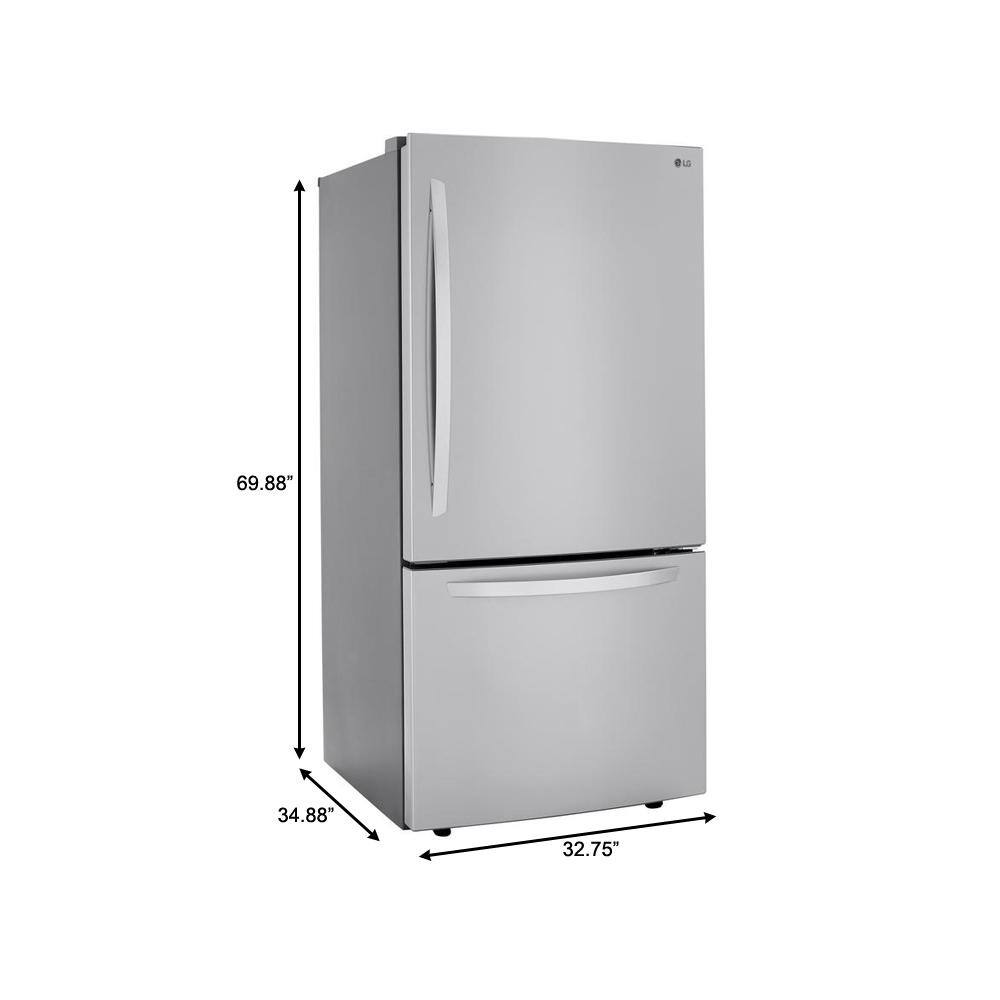
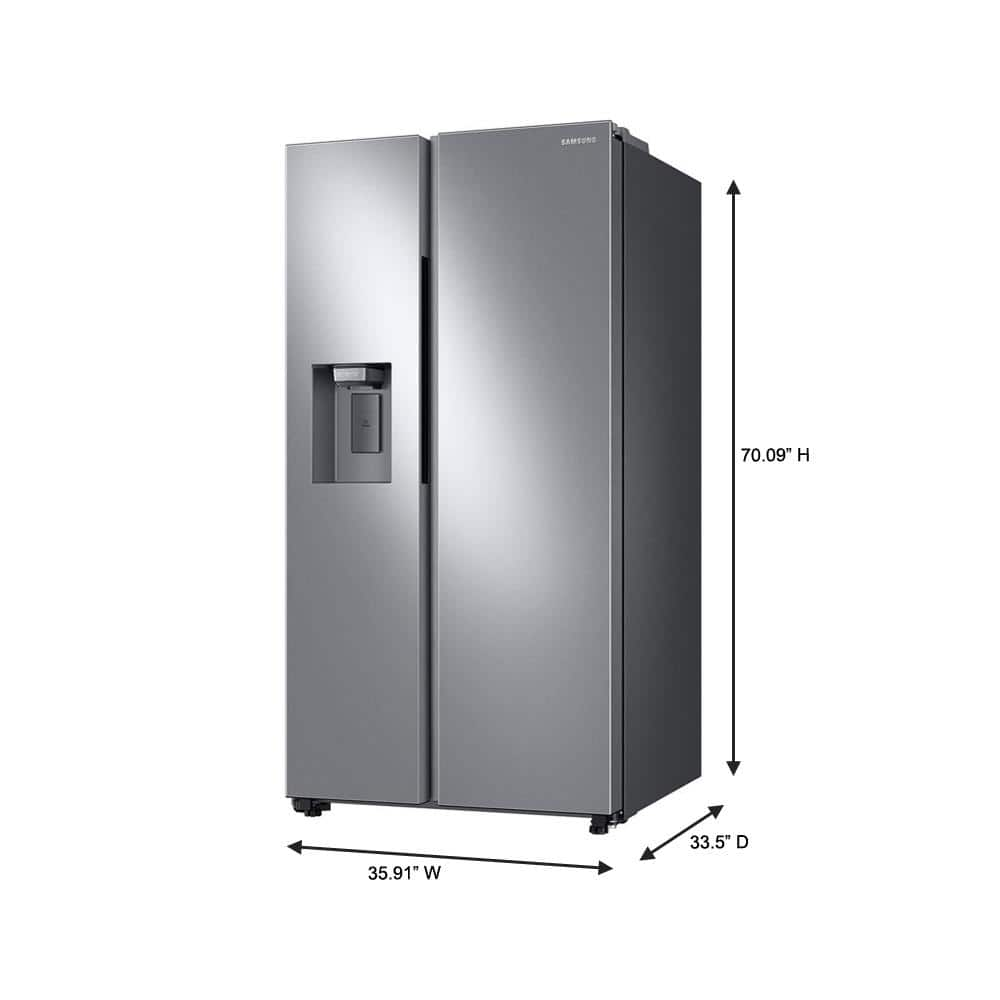
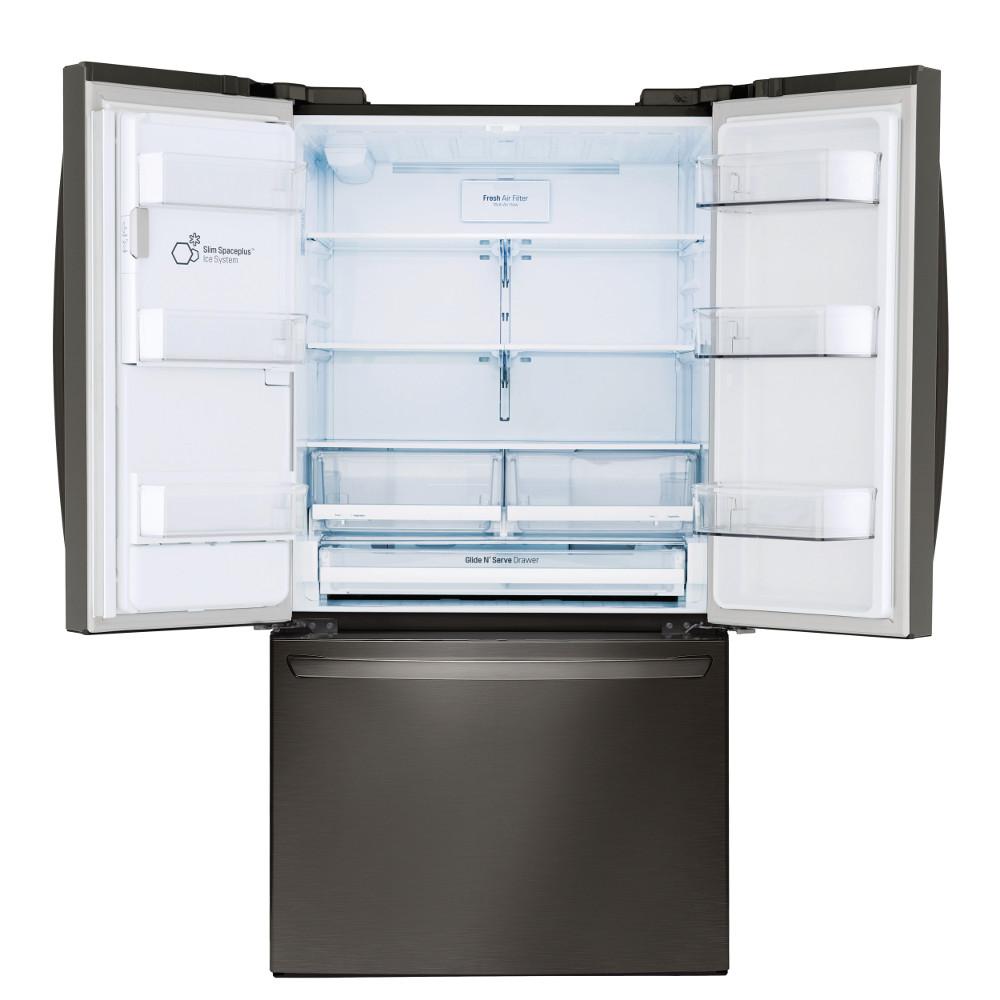
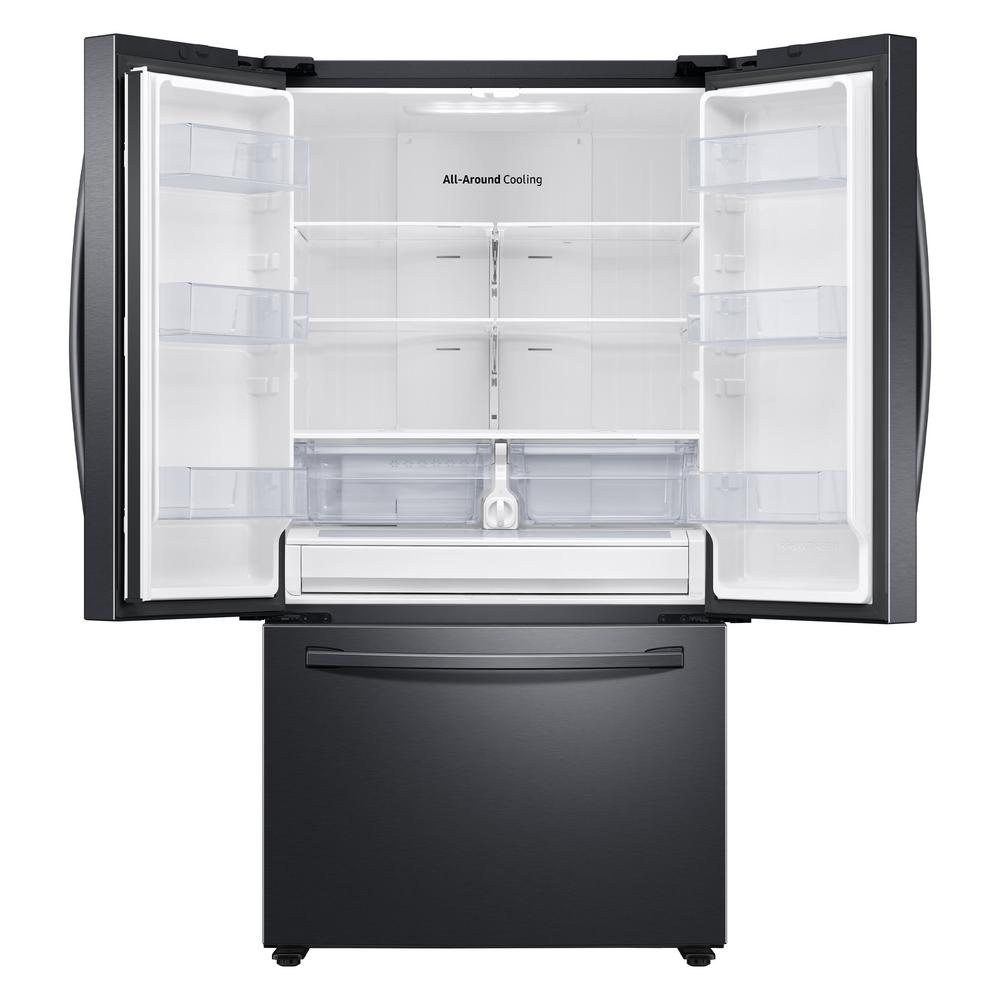
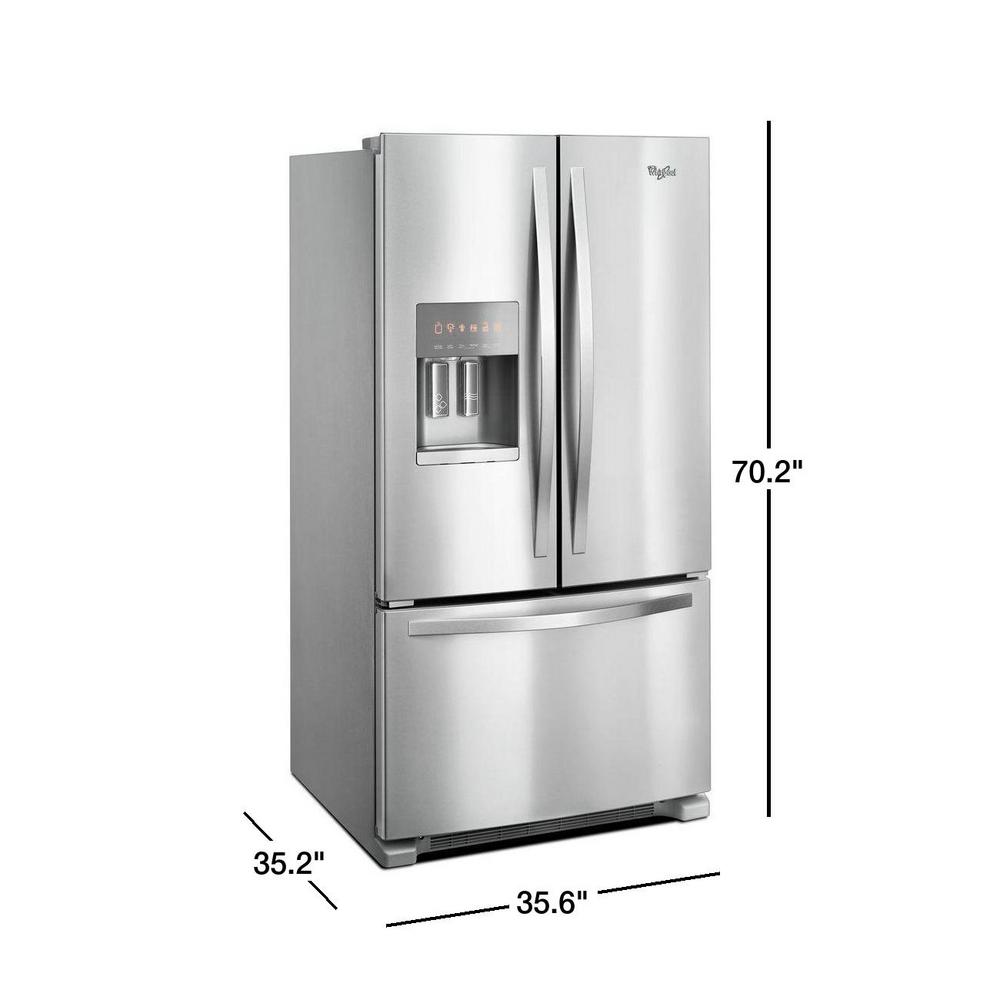
by Lily
This is a great refrigerator, it is a nice size, the ice maker is Awesome (I have been without one for several years). I like the stainless steel, the only reason I gave it 4 stars is because it is listed as not showing fingerprints and it does! Otherwise I’m very happy with my purchase.
by Hoully
Very stylish And functionality is extraordinary. The large capacity of cool that he still in the top and the bottom is a plus plus plus. But this Product gets zero stars when it comes to service.
by Earl
Great fridge! Only set back is the drawers bump each other when closing but still an awesome product.
by Brian
Great fridge – and price comparatively low to similar models of other brands.
by Brad
What a great fridge. Love the size and easy to use. The extra hinges to reverse door swing was a great bonus and easy to switch out. Ice maker works great and doesn’t smell weird. Highly recommended.
by Carol
So far so good! Lots of room and good temp! Love the bottom freezer.